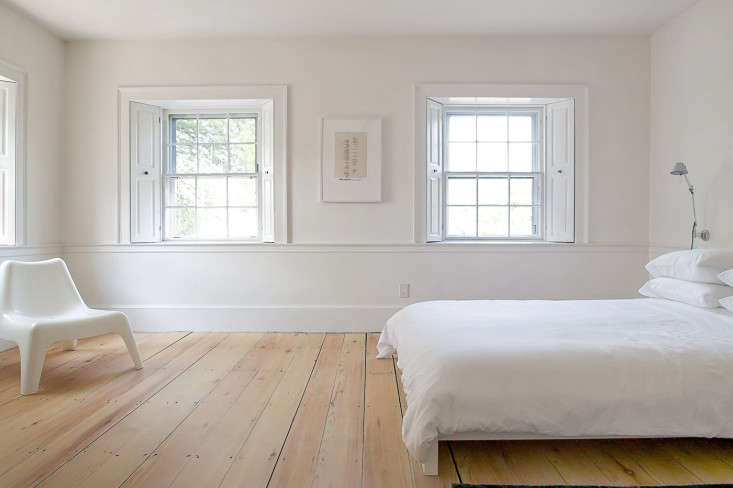
If you already own a copy of Remodelista: The Organized Home as well as every book ever written by Marie Kondo, you may wonder if you really need another volume on the merits of decluttering, simplifying, and streamlining your home. Proponents of less is more, we would normally say no, but New Minimalism: Decluttering and Design for Sustainable, Intentional Living deserves a spot on your bookshelf.
Written by Cary Telander Fortin and Kyle Louise Quilici, the book combines practical tips with real self-help insights—a reflection of the authors’ backgrounds. Fortin has a degree in psychology, while Quilici has degrees in organizational behavior and interior design. The collaboration makes sense: How many times have you thought about tackling a mess but never actually done anything about it? Or started decluttering but never quite finished? Fortin and Quilici understand the roadblocks—some of them psychological, some practical—that can get in the way of a more minimalist lifestyle. In this excerpt, they share tips on how to set the stage for a successful decluttering session.
N.B.: Featured photograph by Justine Hand for Remodelista, from New Salem: Peter Cohen’s Classic Beauty Receives a Modern Makeunder.

1. Set a date.
Yes, you may have to declutter on a Saturday, and yes, a social event will likely surface to tempt you to do anything but declutter that day. Grandma needs help changing a light bulb? You’re there! Resist the urge to convince yourself that it would be better to declutter “next weekend,” which will turn into “later,” which will turn into never. Pick a date and stick to it.
2. Have an assistant.
Enlist the help of a friend, a family member, or anyone whose opinion you value and who is committed to assisting you from start to finish. Having a second pair of hands will make the process so much faster. Plus, having someone else present will keep you from entering the black hole of nostalgia and memories that emerges when you sort your things. How will you trick someone into helping you in this way? Make it more appealing by providing lunch and snacks. Or pay them cold, hard cash (hey, time is money). Or find a friend who wants to declutter his or her own life, and take turns assisting each other. Whatever you do, make sure you have someone to help, because an assistant holds you accountable and is imperative for a successful day.

3. Have cleaning products on hand.
Grab a broom, a dustpan, rags, and an all-purpose cleaning solution. Even the most pristine homes have secret dust bunny colonies.
4. Have lunch already prepared.
Whether you grab lunch from a nearby café or have leftovers ready to heat up, having a lunch plan in place will be important when your brain is tired from so much decision-making.
5. Make sure all laundry is complete and dishes are clean.
The point of all of this is to make space for the most-used items in your home, and those items are probably the ones that you’ve recently worn or used to cook last night’s dinner. This is an imperative first step we recommend completing the day before your session.

6. Gather all those shopping bags and old boxes that you keep saving for a rainy day.
These bags are perfect for gathering your donations. For the kitchen session, you will likely need cardboard boxes and newspaper for the fragile items.
7. Plan your donation strategy.
If you don’t already have go-to organizations where you like to donate, take a minute to check out the Resources section at the end of the book and research a few places in your area. If you don’t have a plan for donations, it’s easy to lose momentum at the end of a long day and let the bags languish in your home or car.
© 2018 by Cary Telander Fortin and Kyle Louise Quilici. All rights reserved. Excerpted from New Minimalism by permission of Sasquatch Books.
N.B.: This post is an update; it was first published on May 16, 2018.
Ready to pare down your belongings? More required reading ahead:






Have a Question or Comment About This Post?